February or mid-April? It has been exceptionally beautiful in the College Park area and throughout most of the country. Today’s average high temperature for the lower 48 was right around 59 degrees. Only about 7% of the lower 48 had high temperatures below freezing.
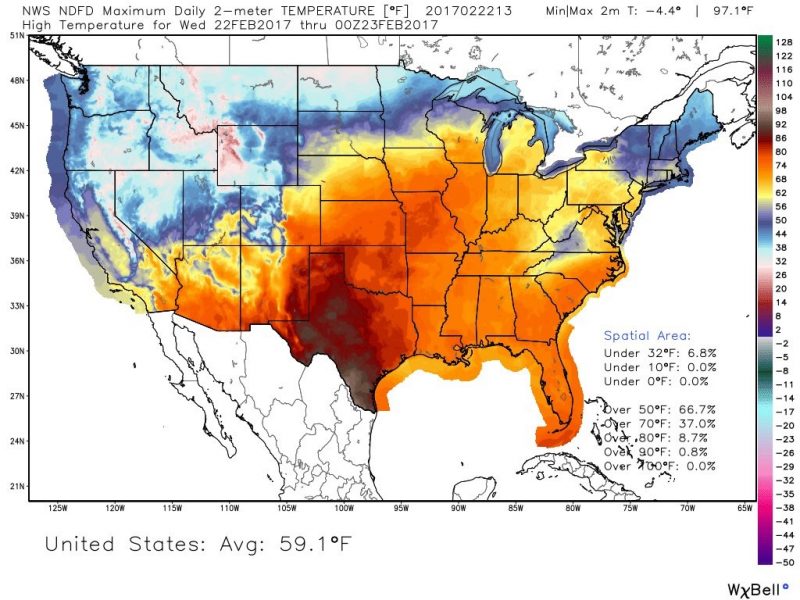
The average temperature for today in the lower 48 states right around 59 degrees. Max temperatures reaching 97 degrees in Texas! (Via WxBell)
In our area, a high-pressure system has moved offshore over the Atlantic and will stay there for the next few days, bringing us warm temperatures.
Through Tonight: Nothing exciting tonight! Clouds will increase late into the night with temperatures remaining pleasant. The overnight lows will be right around 50 degrees with winds remaining calm and out of the South.
Tomorrow (Thursday): Another beautiful day is in the forecast for Central Maryland and the surrounding areas. Clouds and patchy fog will move in early, while morning temperatures will be in the low 50s. Daytime temperatures will be warmer than what we saw on Wednesday, with highs reaching the low 70s. Skies will clear up as the day develops with winds around 5 mph out of the South.
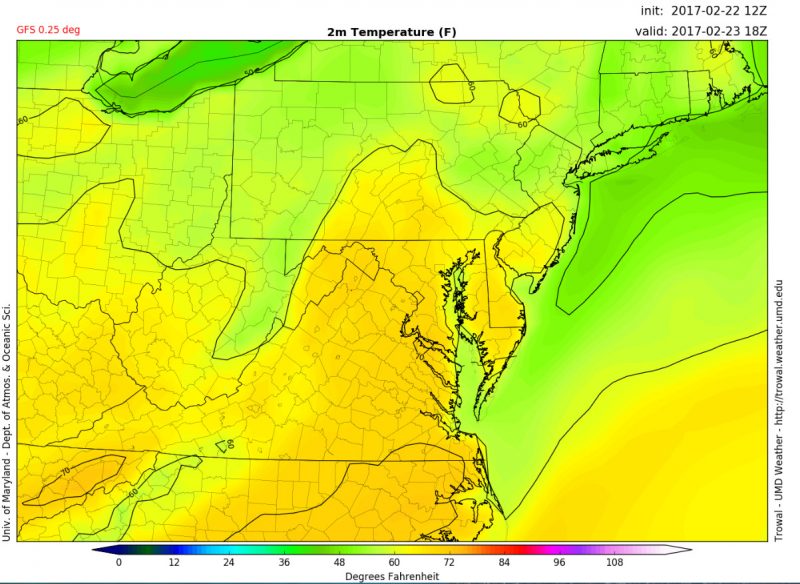
Temperatures reaching into the 70s tomorrow at 1 pm. (Via Trowal)
California Update:
Being that I am originally from the Golden State, it has been great news to see the amount of rainfall that California has received so far this year. These images below from the U.S. Drought Monitor show the difference between November 2016 and the most present drought conditions.
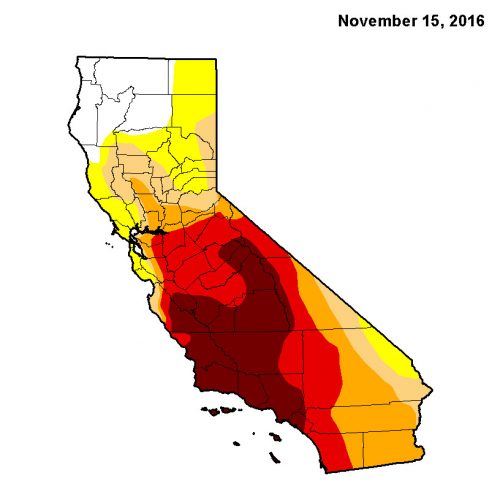
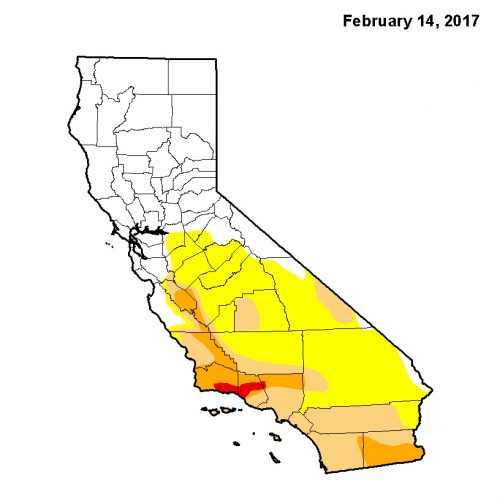
These rain and snow events are being driven by atmospheric rivers, which are plumes of moisture that come from the tropics. These plumes carry the amount of water vapor equal to the flow of water at the mouth of the Mississippi River. This moisture is then released as rain or snow upon making landfall.
However, not all is good about the ample rainfall that California has received. Since the drought in California has been so severe over the past few years, the soil has become extremely dry that it cannot absorb moisture well. This has been a pressing issue all over the state resulting in flash floods and mudslides after each rain or snow event. Some lakes have reached capacity and are using their dam’s emergency spillways for the first time in decades while others, like the Oroville Dam, pose threats of failing, releasing millions of uncontrolled water rushing down into the areas below.
Not only will the surplus of rain help destroy the California drought, but it may also lift water restrictions and help prevent future wildfires which have been a serious issue because of the drought. Most of California has already hit their yearly average rainfall and it is only February. As the rainy season continues, we can only hope for more rain to ensure that California becomes 100% drought free.
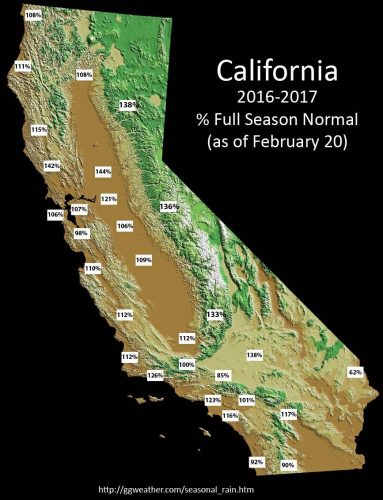
Annual rainfall averages shown in percentages for 2017 in parts of California. (Via Jan Null)
